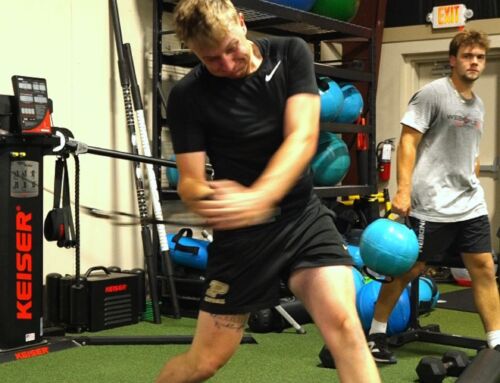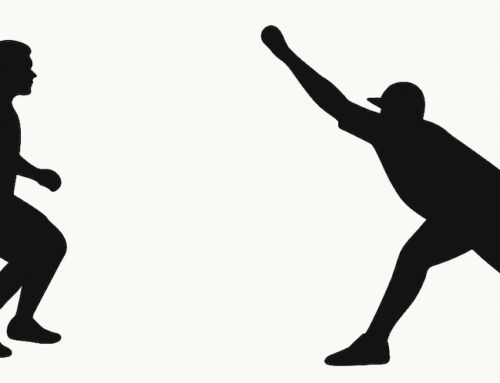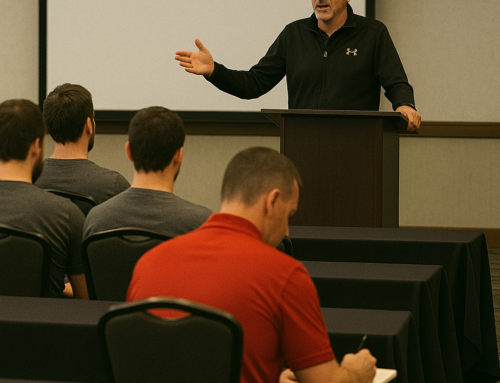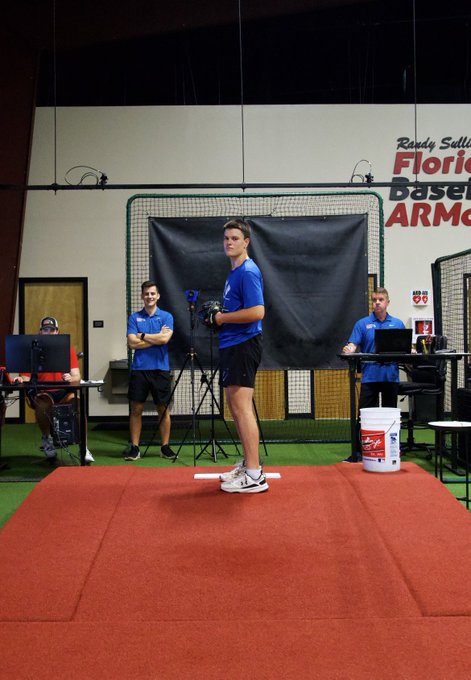
When most pitchers or coaches think about velocity, they picture the obvious: arm speed, weight room strength, “getting more explosive,” or finding a magical mechanical tweak.
But in our Newtforce® Integrated Pitching Lab, we’ve discovered something that often matters just as much , and in some cases, even more.
It’s a metric we call Clawback. And once you understand it, you’ll see why it ranked as the #4 most important influencer of pitch velocity in our landmark 2019 study, right behind player mass, impulse, and player velocity.
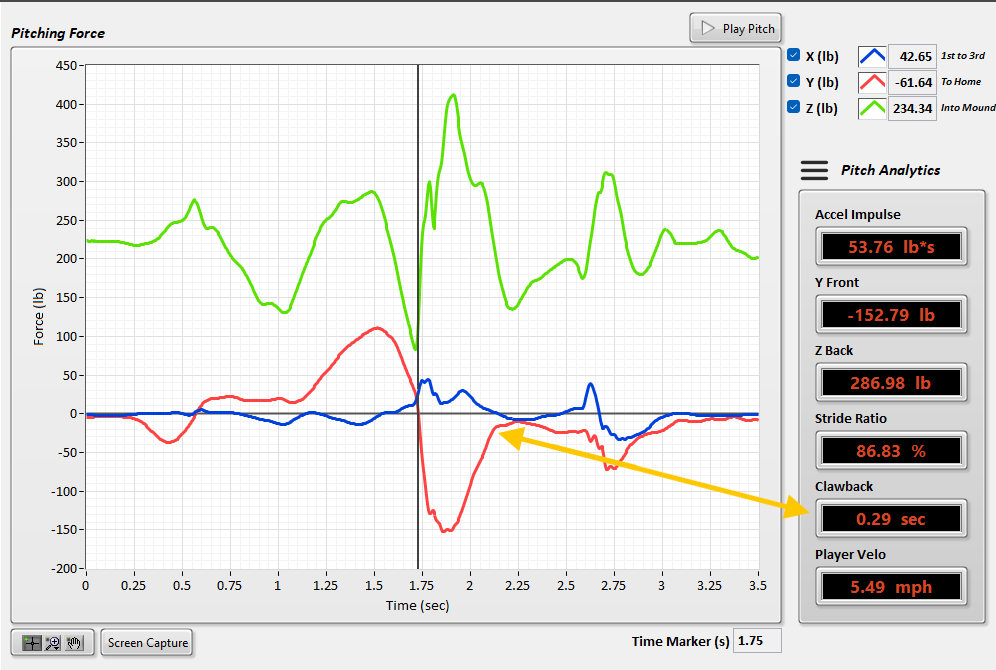
Clawback
What is Clawback?
Clawback is a representation of how well your front leg braces and stops your forward momentum after you land. Technically, it’s the amount of time it takes the negative Y-axis ground force, generated when your front foot hits the ground, to return to the zero line.
That number might seem abstract, but in simple terms:
- If you brace well, your body stops moving forward quickly, energy transfers efficiently, and your arm is free to accelerate the ball without unnecessary strain.
- If you don’t brace well, energy leaks out, timing breaks down, and your arm ends up working harder than it should.
Through thousands of data points in our lab, we’ve found that a solid Clawback time is around 0.21 seconds. That’s the sweet spot.
When Clawback is Too Slow
If your Clawback time drifts toward 0.30 seconds or longer, here’s what’s usually happening:
- Your front knee is leaking forward or drifting laterally after foot strike.
- This introduces slack into your lead leg’s iliotibial (IT) band, a thick band of connective tissue running along the outside of the thigh.
- The IT band normally acts like a lateral truss, stopping the pelvis from spinning too early in the transverse plane. When it’s slack, it can’t do that job.
As a result, your pelvis spins before it should, you lose authentic extension toward the plate, and you release the ball further from home. This typically costs you velocity, reduces the quality of your secondary pitches, and can lead to arm discomfort or injury.
When Clawback is Too Quick
You can also go wrong the other way. If your Clawback time is too fast (in the neighborhood of 0.12 seconds) it usually means:
- The muscles of your lead leg didn’t activate in time.
- Your knee snapped into passive, uncontrolled extension rather than a strong, co-contracted brace.
- The IT band slipped forward of the femoral condyle, again removing its ability to halt the pelvis in the transverse plane.
This is exactly what we see with the widely taught (but deeply flawed) idea of a “lead leg block.” It might look powerful in still photos, but it’s often just a passive collapse that prevents the body from sequencing efficiently.
Why Pelvis Control is the Hidden Engine
In both too-slow and too-fast Clawback scenarios, the pelvis spins too early. That early spin:
- Shortens your extension (hurting perceived velocity and movement).
- Changes your arm path and timing, which can disrupt command.
- Forces the arm to take over as the primary source of acceleration, increasing injury risk.
A properly timed and controlled Clawback allows the pelvis to stay closed longer, maintaining tension in the right tissues, storing elastic energy, and then releasing it in a whip-like sequence that benefits velocity, command, and health all at once.
How We Measure Clawback in the Lab
Here’s where The ARMory’s Newtforce® Integrated Lab sets us apart. We don’t guess about Clawback, we measure it from multiple angles and cross-verify with other data streams.
- Ground Force Data
The Newtforce mound captures the exact timing of your negative Y-axis force and how quickly it returns to zero. This gives us your Clawback time to the hundredth of a second. - Motion Capture
We measure your front knee angle at both foot strike and ball release.- If the angle barely changes, you’re likely using a co-contracted bracing strategy.
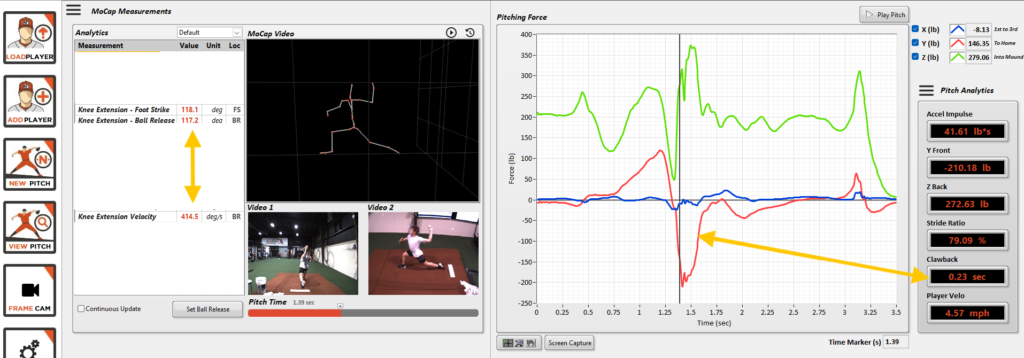
- If the knee angle collapses significantly, you’re losing the brace and your Clawback time will lengthen.
For example: - A knee moving from 115° to 107° likely = brace loss.
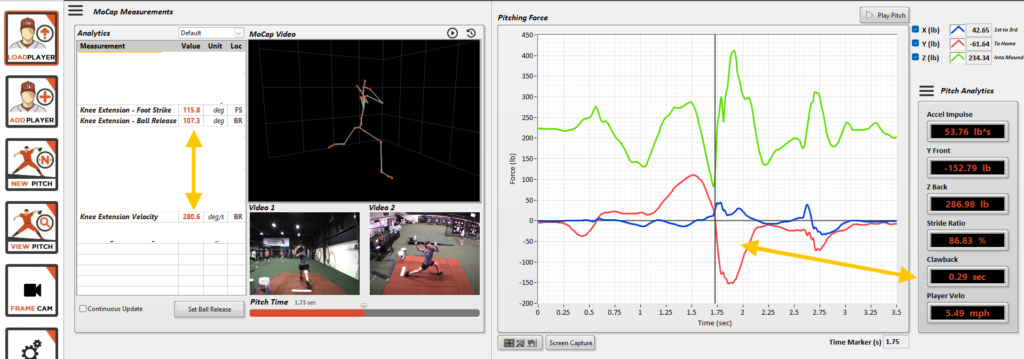
- A small change (knee angle increasing 15–30°) can be fine if knee extension velocity matches the right pattern.
- A large change (knee angle increasing > 35-40°) could be a sign of an inefficient passive block.
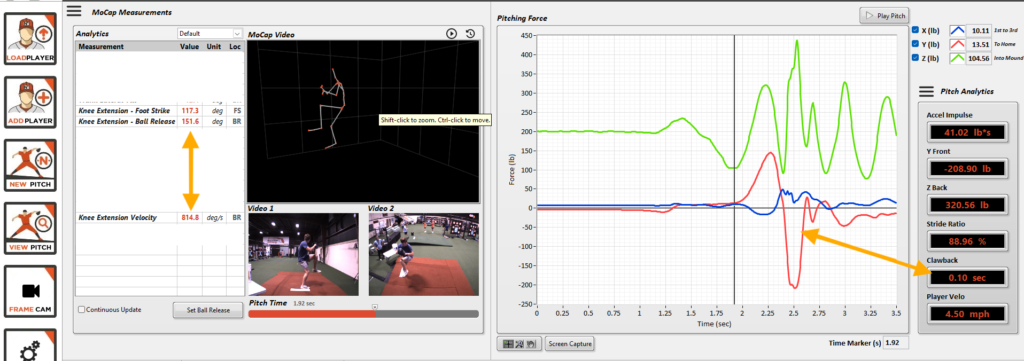
- If the angle barely changes, you’re likely using a co-contracted bracing strategy.
- Knee Extension Velocity
At around a 20° knee change, we expect ~500°/sec velocity. For every additional 5°, you should see ~100°/sec more. This indicates controlled, active bracing.
If velocity skyrockets (e.g., >1000°/sec) with a huge angle change (like 50°), it’s almost always a passive block, which causes the pelvis to spin off. - TrackMan Ball Flight Data
We line up Clawback with extension, induced vertical and horizontal movement, and spin efficiency. Poor bracing patterns show up clearly in these ball metrics. - Edgertronic High-Speed Video
We can actually see the moment of ball release, the position of the pelvis, and the spin imparted, confirming what the numbers are telling us.
This type of integration across multiple data platforms is light years ahead of any other pitching lab in the world, and it demonstrates the unmatched power of The ARMory's Integrated Newtforce® Lab.
Why This Matters to You
Clawback isn’t a theoretical number. It’s directly tied to:
- Velocity: Stronger, better-timed bracing equals more efficient energy transfer.
- Command: Stable pelvis control keeps your release point consistent.
- Pitch Quality: The right extension improves movement profiles on breaking balls and fastballs alike.
- Arm Health: When your lower half does its job, your arm doesn’t have to do it all.
In our 2019 study, we found Clawback to be the fourth most important factor for velocity, and it’s highly trainable.
From Data to Drills
Once we identify a Clawback issue, we don’t just hand you a number and wish you luck. We design constraints-led training environments that:
- Remove the movement options that create slack.
- Add sensory feedback to promote co-contraction at the right time.
- Encourage exploration of better movement strategies until you own them under game conditions.
We also track your progress over time, building performance heat maps … visual guides to the movement ranges where you consistently hit your best numbers.
The Big Picture
The integration of ground force analysis, motion capture, TrackMan, and high-speed video gives us a complete picture of your delivery that no single tool could provide on its own. This multi-layered approach:
- Shortens the time it takes to make meaningful changes.
- Gives you objective proof that your training is working.
- Helps you avoid the trial-and-error guessing that plagues most pitching programs.
It’s why we say our lab is five years ahead of what even most MLB teams are doing, and why athletes from high school hopefuls to major league veterans trust us with their careers.
If you’re ready to discover your Clawback strategy, fix it, and watch your velocity, command, and arm health all improve, call us at 866-787-4533 to schedule your evaluation.
We’ll measure it. We’ll fix it. And we’ll prove it.
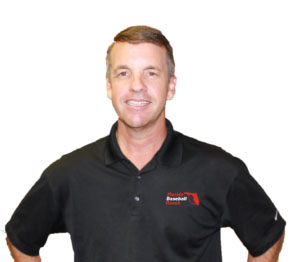
Randy Sullivan, MPT, CSCS CEO, Florida Baseball ARMory


